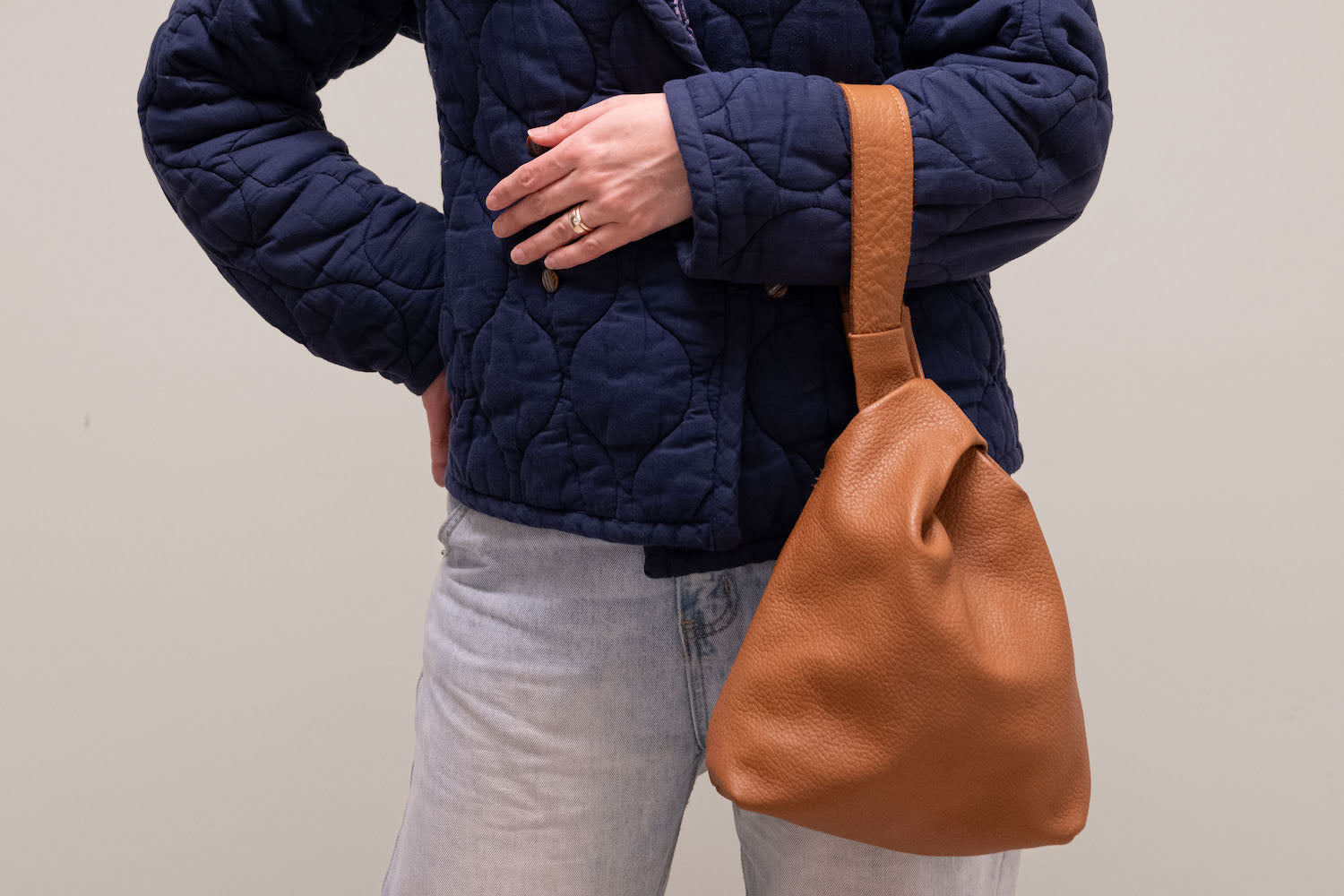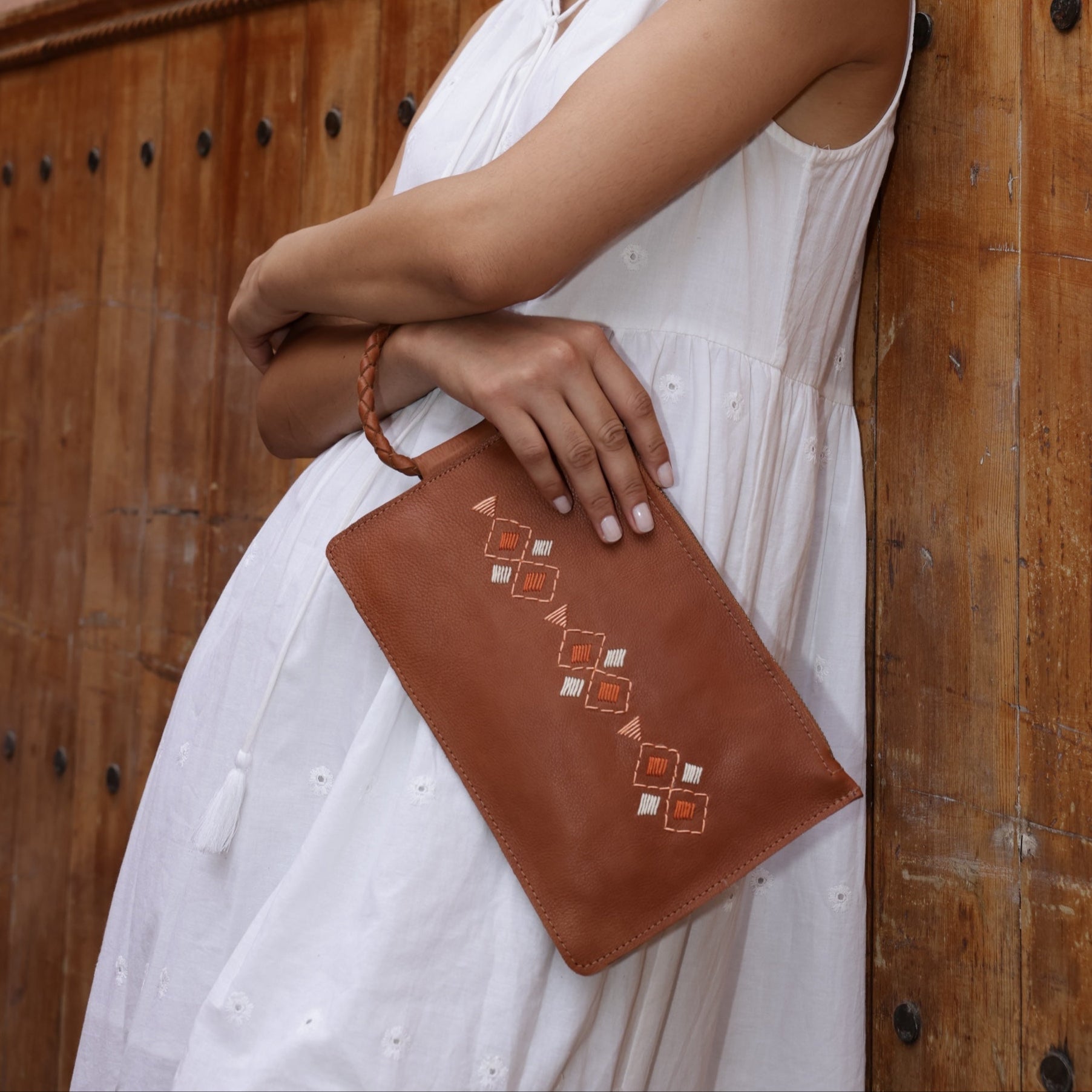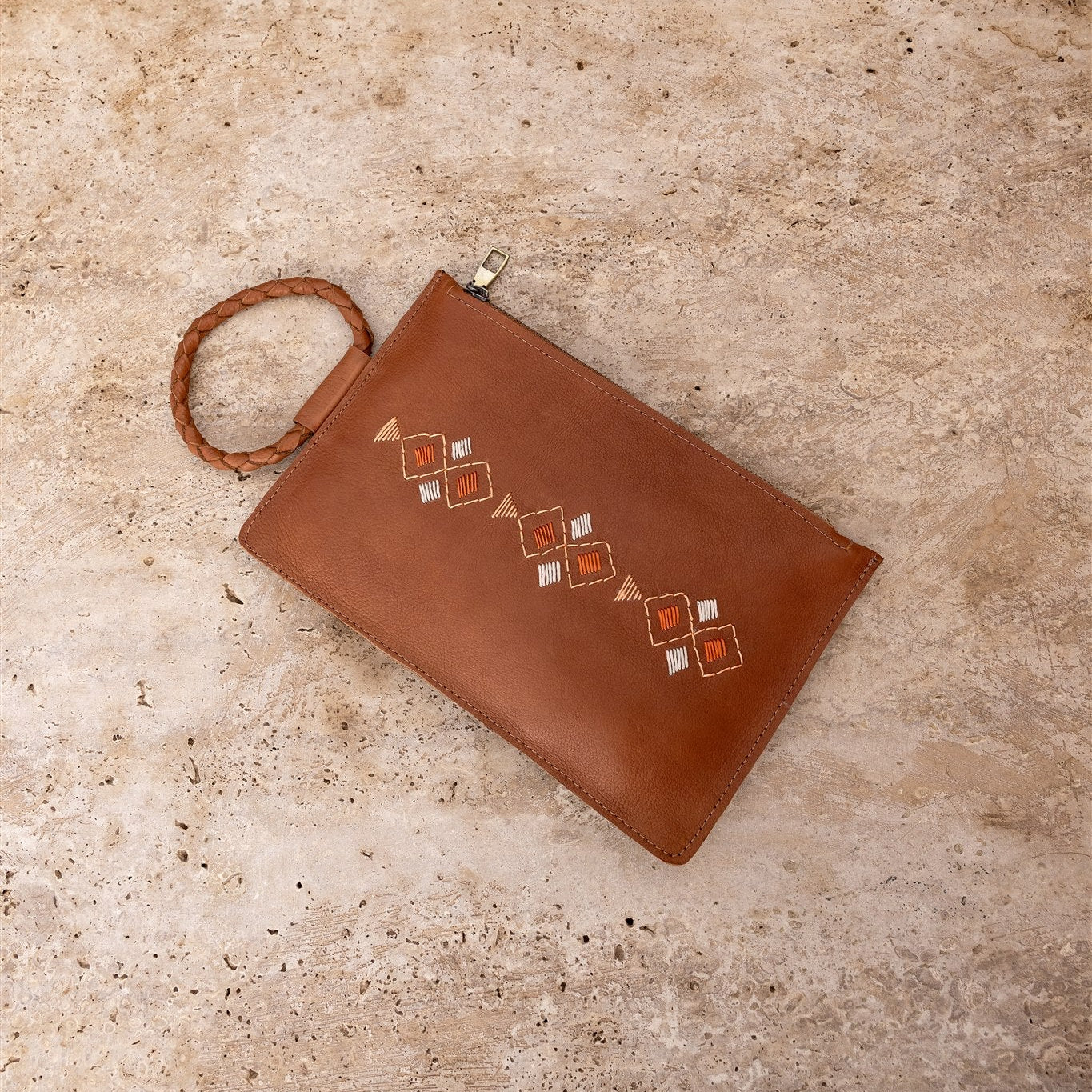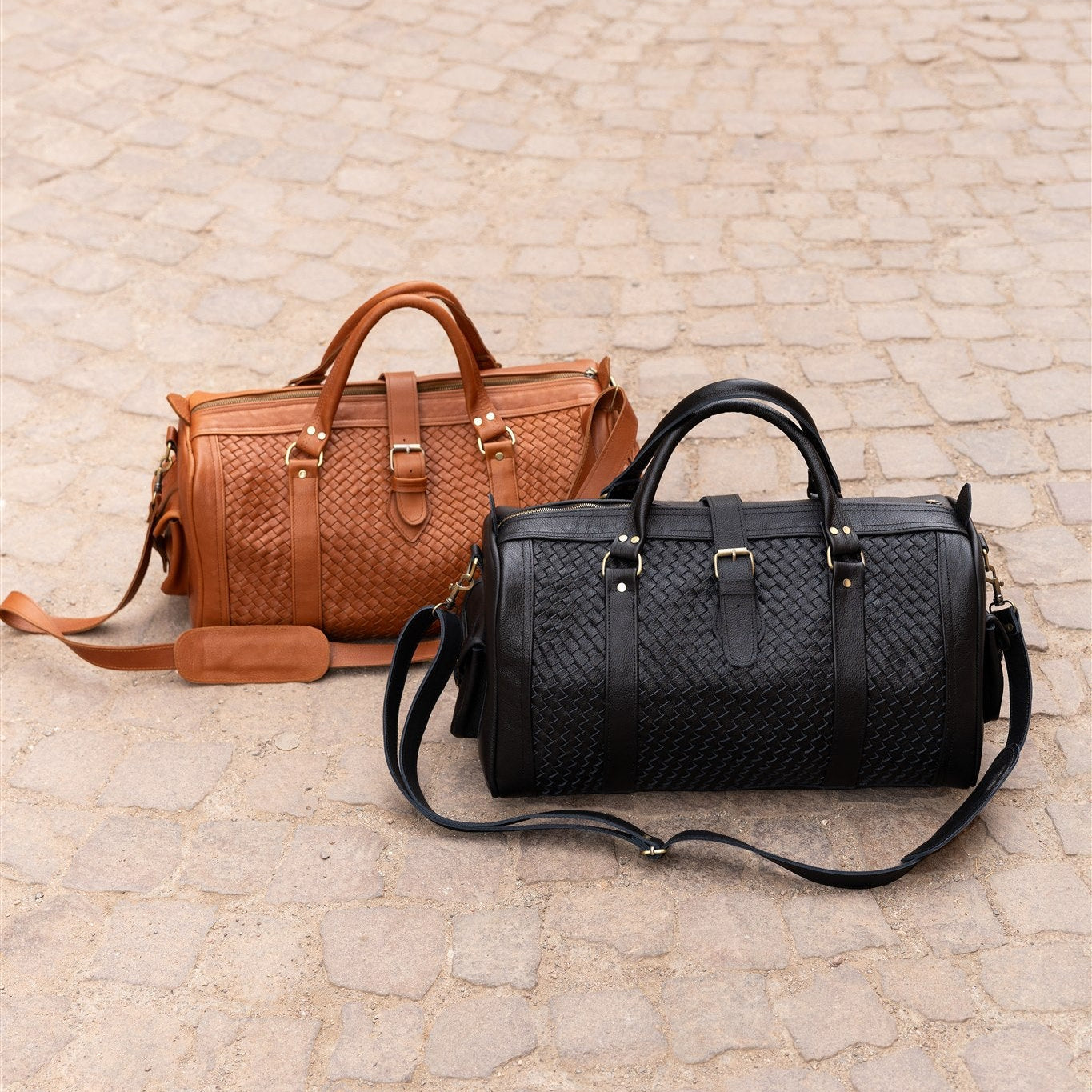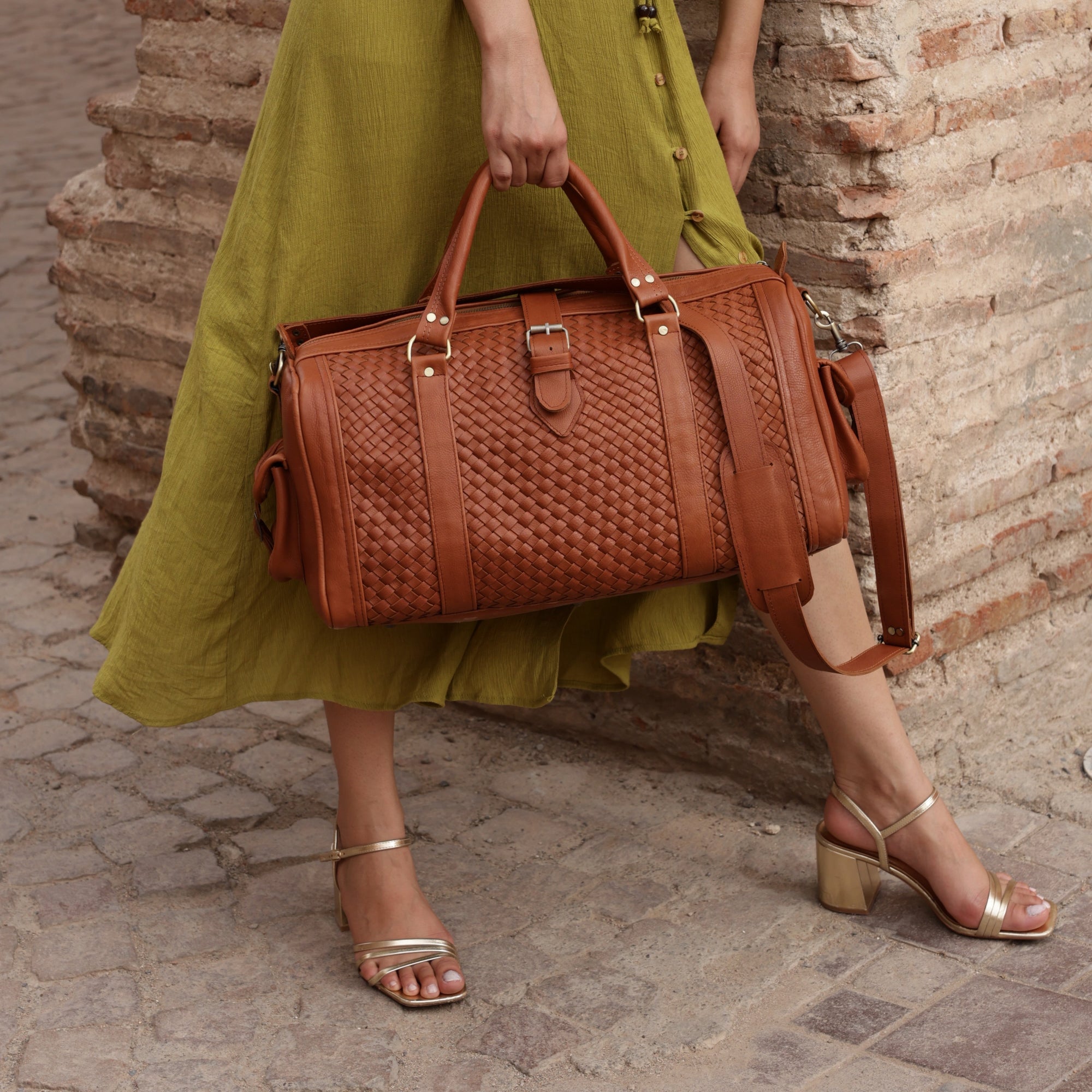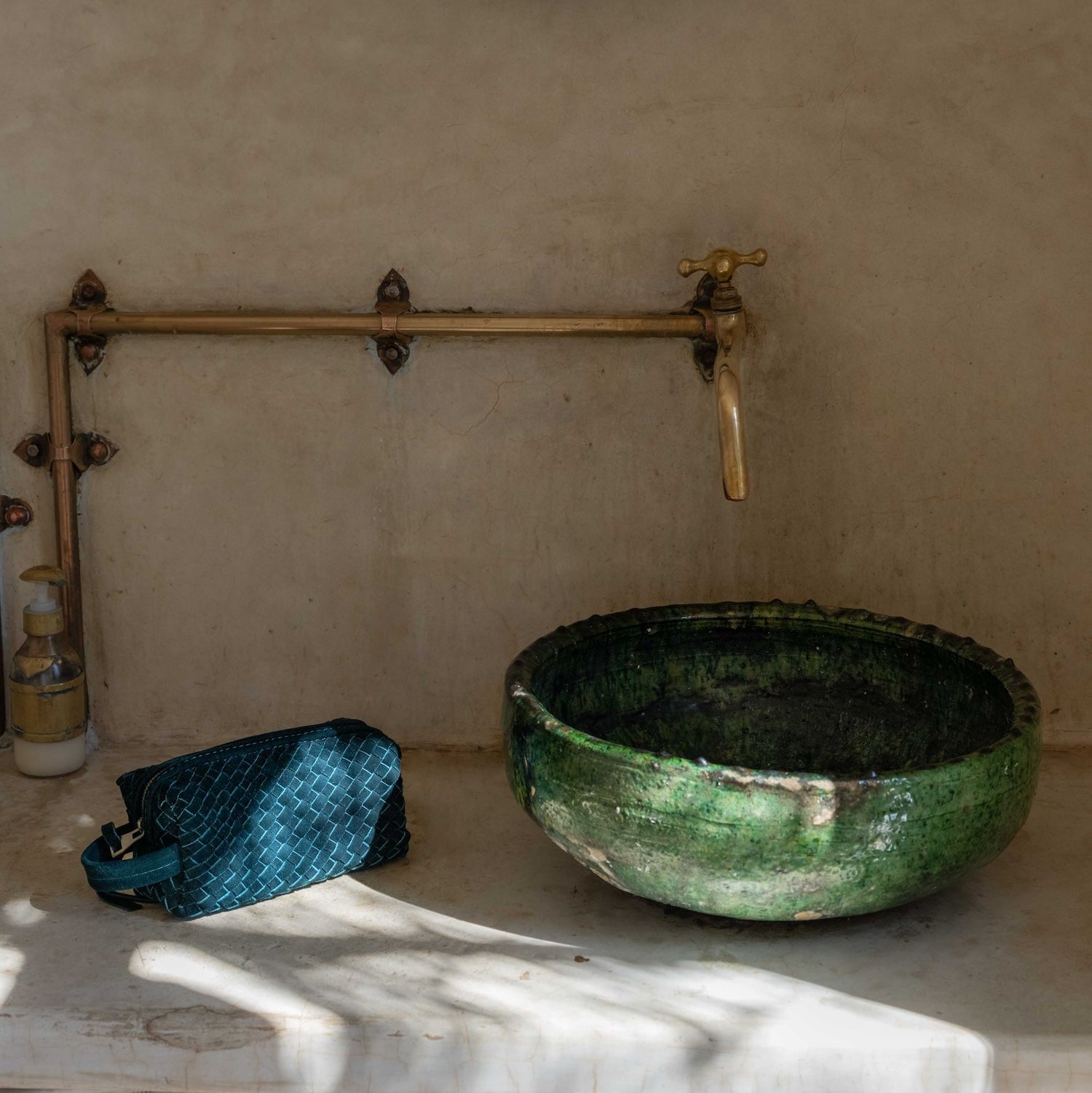As a brand that celebrates the art of craftsmanship, we love exploring the nuance of styles all over the world. We recently traveled to Japan to soak up the inspiration, tradition and scenery, and we couldn’t help but notice the incredible handbags.
Widely known for exquisite craftsmanship and meticulous standards of quality, Japanese bags are absolutely something to write home about. Let’s delve into the stunning spectrum of designs seen on streets of Japan.
A Traditional Icon: The Knot Bag
The Japanese knot bag, also known as "Mochi Bukuro", is a timeless classic beloved by everyone. Made from a single piece of fabric, these bags have been a symbol of elegance for centuries, and probably will be for centuries to come. The clever, two-handled design allows you to secure your belongings with a single gesture. The silhouette embodies Japanese minimalism unlike anything else, and is as functional as it is beautiful. We love it because it’s versatile enough for simple, everyday looks but also pairs well with statement-making pieces.

A Touch of Elegance: The Kimono Clutch
For special occasions, we’re enamored with the kimono clutch. The intricate patterns, embroidered details and graceful silhouette make it the perfect finishing touch for your best evening looks. Inspired by the artwork of traditional Japanese kimonos, kimono clutches effortlessly exude interest and sophistication. They come in almost any shape you can imagine and feature hardware from traditional clasps to fine chain straps that add utility. We like the idea of pairing a kimono clutch with a more laid back look as well, especially for daytime exploring when you want to travel light.

A Multi-Use Miracle: The Bento Bag
Practicality and sustainable style come together in the wildly popular bento bag, which is inspired by the traditional Japanese art of “furoshiki''. Furoshiki involves using a square piece of cloth to bundle items to make them easier to carry. You’ll see people all over carrying lunches, books and belongings in bento bags because they’re so wonderfully adaptive to daily life. Made from durable, lightweight and foldable fabrics, many people actually keep them packed inside their work or school bags when they plan to shop on their way home — eliminating the need for large totes or single-use shopping bags.

A Splash of Artistry: The Shibori-Style Bag
Shibori is a Japanese dyeing technique that involves manipulating fabric to create intricate patterns and designs. To achieve different looks, the fabric is folded, twisted, bound, or hand-stitched before artisans apply richly colored dye. The result is beautiful and often unpredictable. No two pieces are alike, making each once that much more special. The process has roots in ancient ceremonial practice and has long since been adopted by the fashion world for its organic, freeform beauty.
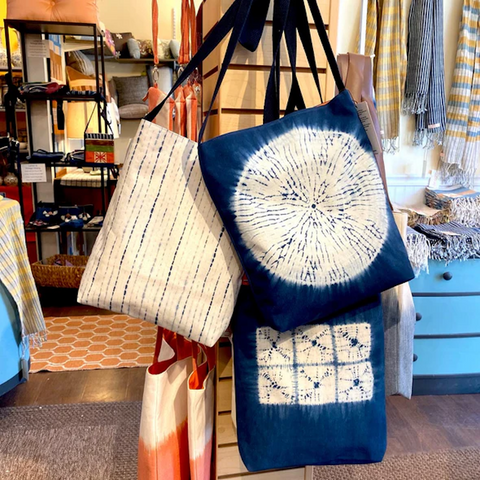
A Touch of Luxury: The Himeji Leather Bag
The unique thing about Himeji leather is that it is the only naturally white leather in the world. Originating from Himeji City, this leather is known for its premium quality and thousand-year history, making it a symbol of tradition and modern luxury. Craftsmen work on the Himeji Leather by bare hand and foot with salt, rapeseeds oil and water from the Ichikawa river. We saw a lot of hand-painted wallets, but you can find other styles as well, from structured satchels that hold everything to elegant mini bucket bags that would be the perfect arm candy for a wedding.

The craftsmanship behind Japanese bags is truly a way of life. Japanese artisans take pride in every detail, from the construction of the iconic knot bag to the thoughtful dyeing techniques of the shibori-style bag.
Looking for a way to snag a Japanese-style bag of your own? Stay tuned for upcoming small batch releases!
Happy travels!


